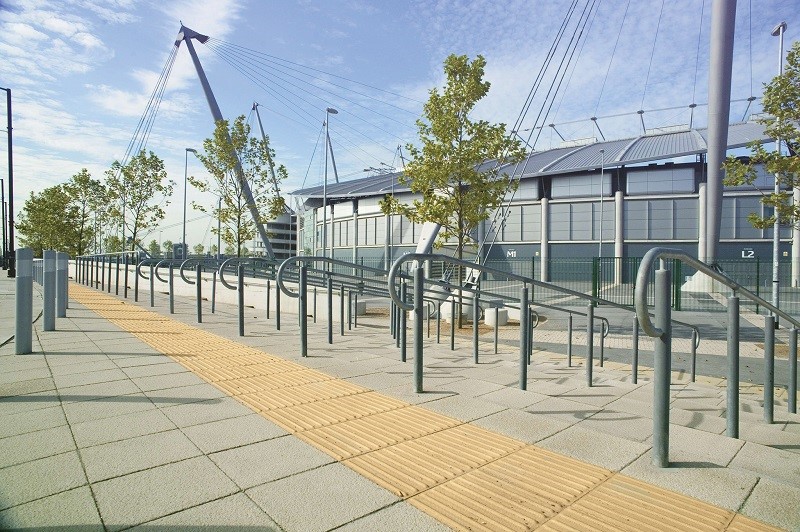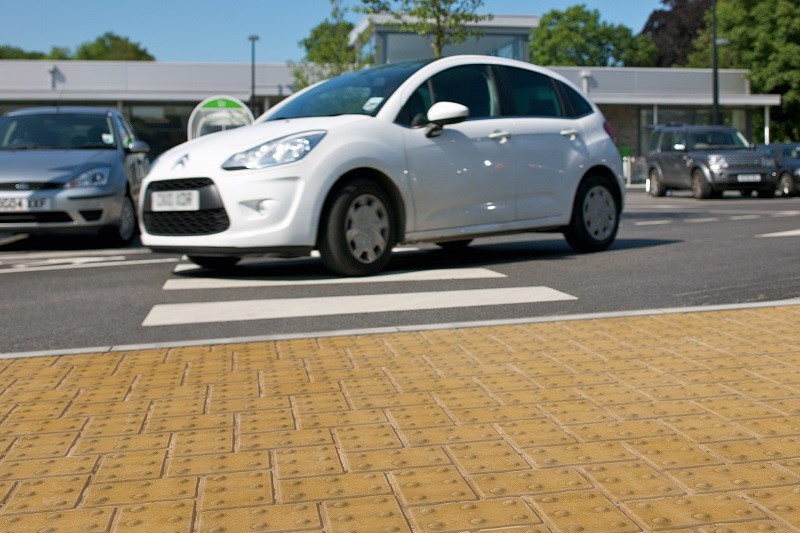05 September 2024


Landscape House, Premier Way, Lowfields Business Park, United Kingdom, HX5 9HT
T: 01422 312 911
E: info@marshalls.co.uk
W: https://www.marshalls.co.uk/
For people with no visual impairments, tactile paving and its uses may go unnoticed. Whereas to the visually impaired, these pavers are crucial in day-to-day life, mapping out public spaces for safer access.
With this in mind, the paving experts at Marshalls have revealed what tactile paving is and why it is important in public spaces.
Tactile paving is a system of profiled ground surface features designed to aid individuals with visual impairments when navigating public spaces. They provide indicators of environmental changes such as pedestrian crossings, obstacles and edges of platforms. They are an important contribution to creating safe and inclusive public spaces.

What are the different styles of tactile paving?
1 - Blister paving
Blister paving is generally used at roads and crossings, indicating that this is a regulated and designed area for crossing the street. This paving comes in various colours, however, red blister paving must be used for controlled crossings and cannot be used for any other tactile paving styles.
2 - Platform edge blister paving
What differentiates platform edge blister paving from standard blister paving is that the blisters are offset and staggered for the platform edge, rather than aligned in format. This style is used for off-street transport systems, such as railway stations.
3 - Lozenge paving
For light rapid transport systems, such as tramways, lozenge paving would be used. These have large, raised, lozenge shapes across them to indicate that you are at a boarding point or near the transit system/ tracks.
4 - Cycle tactile paving
Cycle tactile paving slabs have raised strips across them to indicate the pedestrian and cycle sections of shared cycleways. On the cycle side of the pathway, the bars will be pointing towards the direction of cycle travel. Contrastingly, the pedestrian side of the pavement will see the bars crossing the pavement from left to right, making this side uncomfortable for cyclists.
5 - Corduroy/ hazard warning paving
Corduroy paving is similar to cycle tactile paving with raised lines across the paving slabs. However, these will instead be placed across the approach to a hazard, such as obstacles in an open space or the top/bottom of a flight of stairs.
6 - Guidance paving
This is a more uncommon style of tactile paving, used to guide users around obstacles in open spaces. If the user knows that a pathway can take them from one corner of a large square to another, then it eases their journey.

Mark King, a paving engineer at Marshalls has shared the following about the importance of tactile paving when creating inclusive public spaces: “As we age, our eyesight naturally deteriorates - impacting how we interact with and experience the world around us. There are over 2 million people in the UK currently living with sight loss, highlighting the need for inclusivity and accessibility in public spaces.
“Tactile paving plays a critical role in the accessibility of public spaces, providing indicators to those with visual impairments to help reduce the risks of dangers and make day-to-day life easier. These profiled paving styles are designed to differentiate between changes in the open environment, for example, an approaching flight of stairs or road crossing. This is achieved through the different textures and patterns used; blisters are used to indicate a street crossing, whereas raised strips are used when a flight of stairs is approaching.
“It’s important that we identify any obstacles and obstructions to ensure we are doing everything we can to future-proof public spaces across the country, aiding independence and the ageing population.”
You can read more about tactile paving here: https://www.marshalls.co.uk/commercial/blog/what-is-tactile-paving
View Previous Article
Marshalls launches new, easy-fit solution for patios and driveways